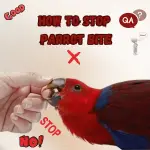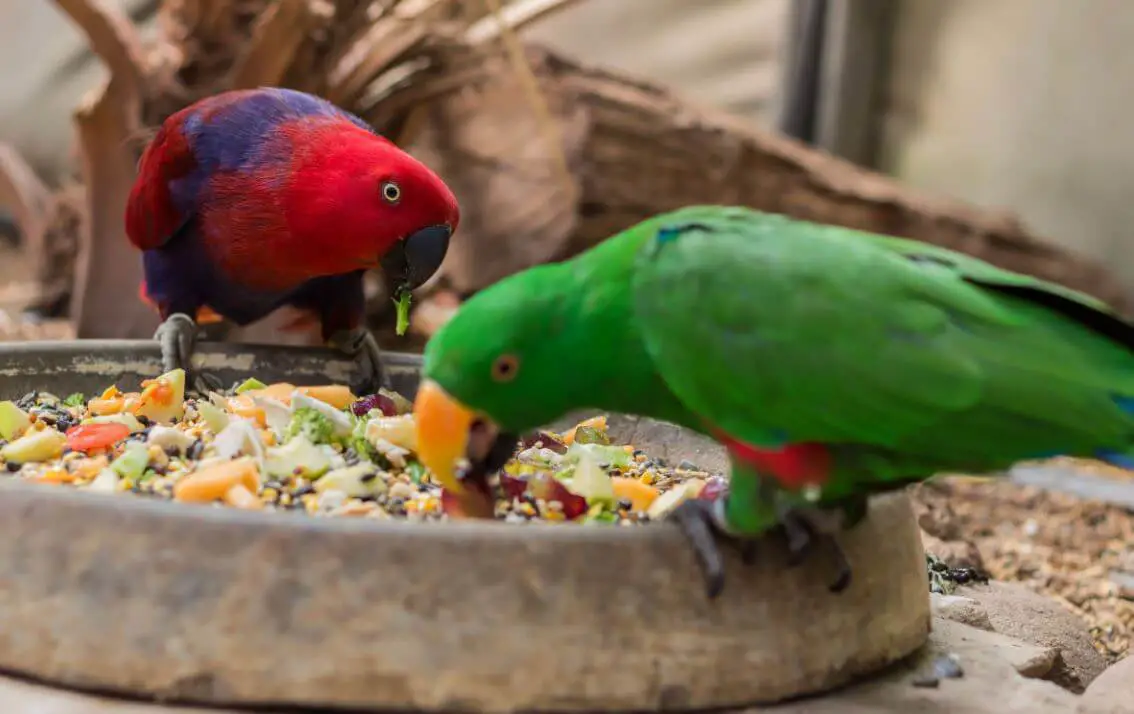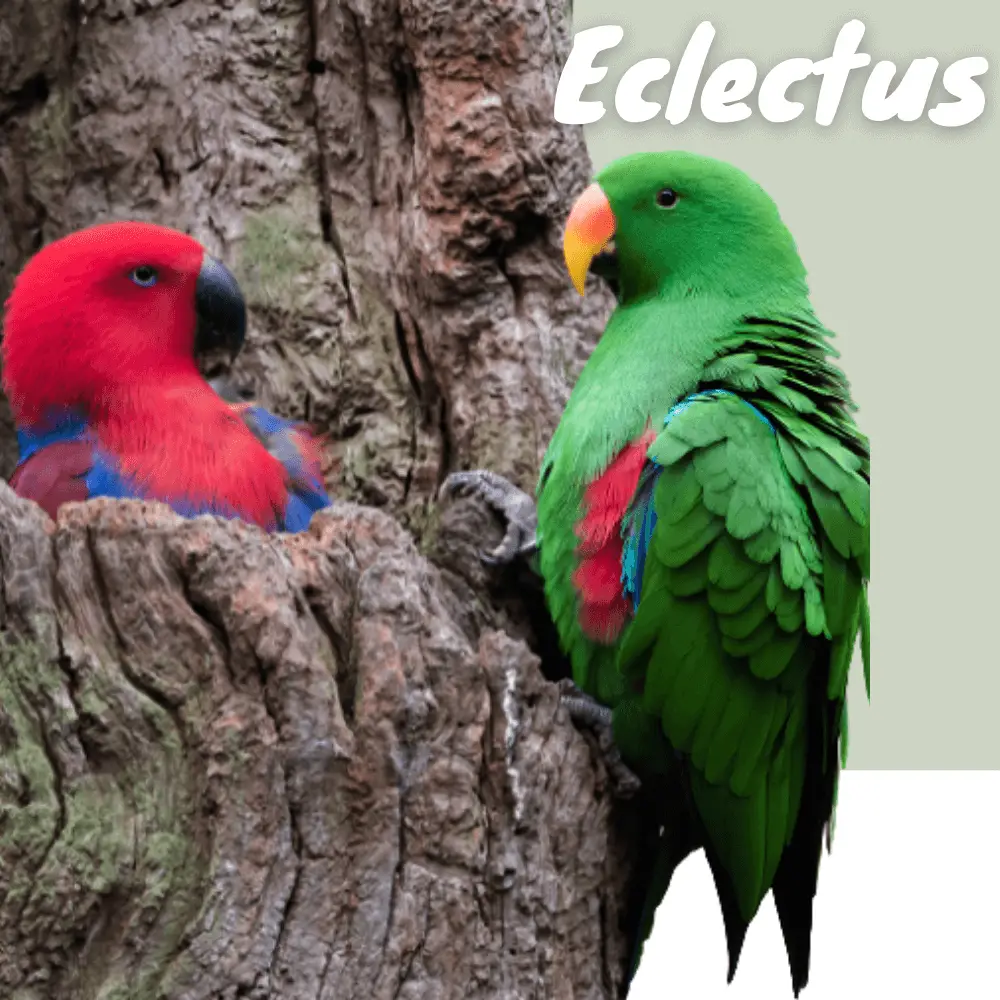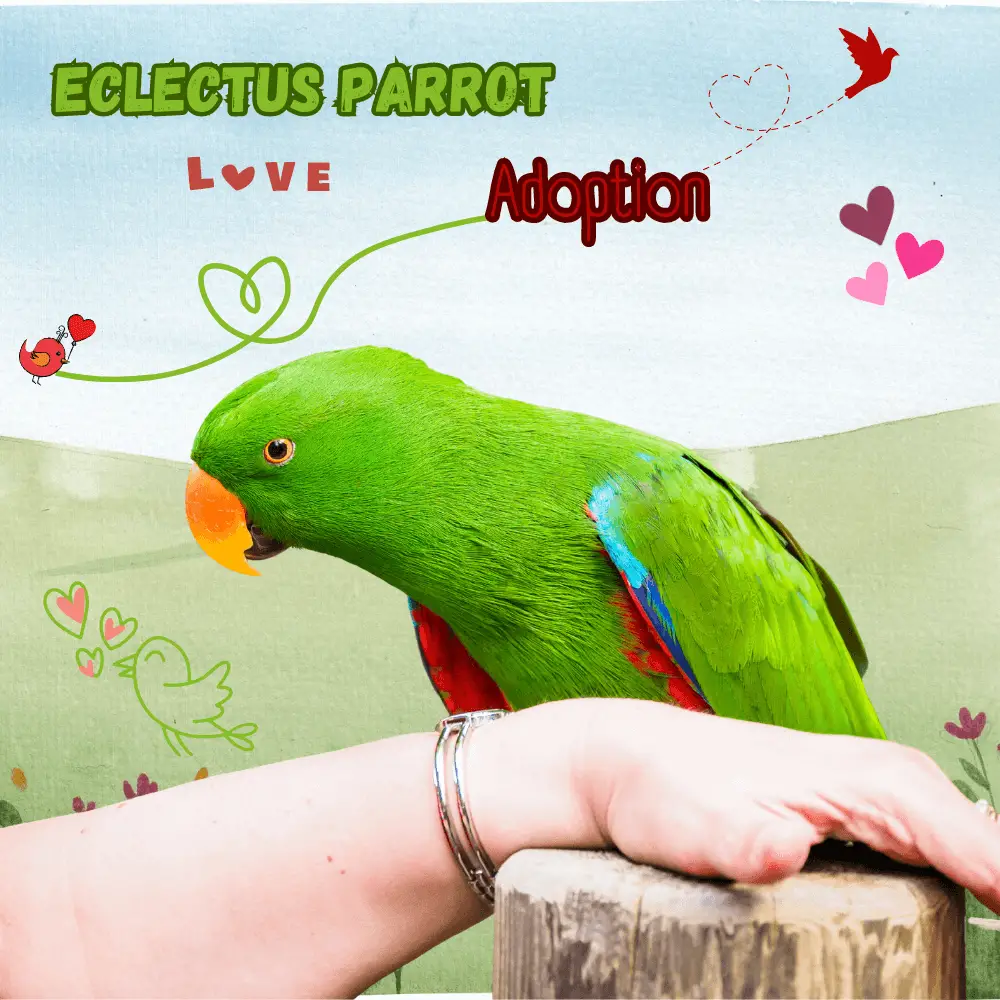
Eclectus parrot adoption: If you want to keep an Eclectus as a pet, you should consider its needs, characteristics, and behavior. Therefore, you should provide him with enough space and ensure a balanced diet.
The Eclectus Parrot needs a large cage or aviary, at least 4 meters high and 2 meters wide so that it can spread its wings well. You should also equip the cage with wooden wires and bars.
The Eclectus Parrot should be able to leave the cage for short trips, provided that you have established sufficient trust in your bird. In this way, the animal becomes calmer and more comfortable in its surroundings.
As far as climatic conditions are concerned, this parrot is quite adaptable to temperature fluctuations. However, he does not tolerate the cold well, so you should offer him good shelter.
As for nutrition, you can offer him vegetables like carrots, corn, lettuce, or tomatoes. Fruits like apples and pears are ideal for his diet. Because this should be rich in vitamin A so that its plumage shines brighter.
As you can see, the Eclectus Parrot is a bird that does not cause major problems as a pet. However, in its natural habitat, it is usually more territorial and vocal in order to communicate with its parents and conspecifics.
Since his diet is the source of his beauty, it’s important that you eliminate anything from his diet that affects his health and appearance.
Eclectus parrot behavior
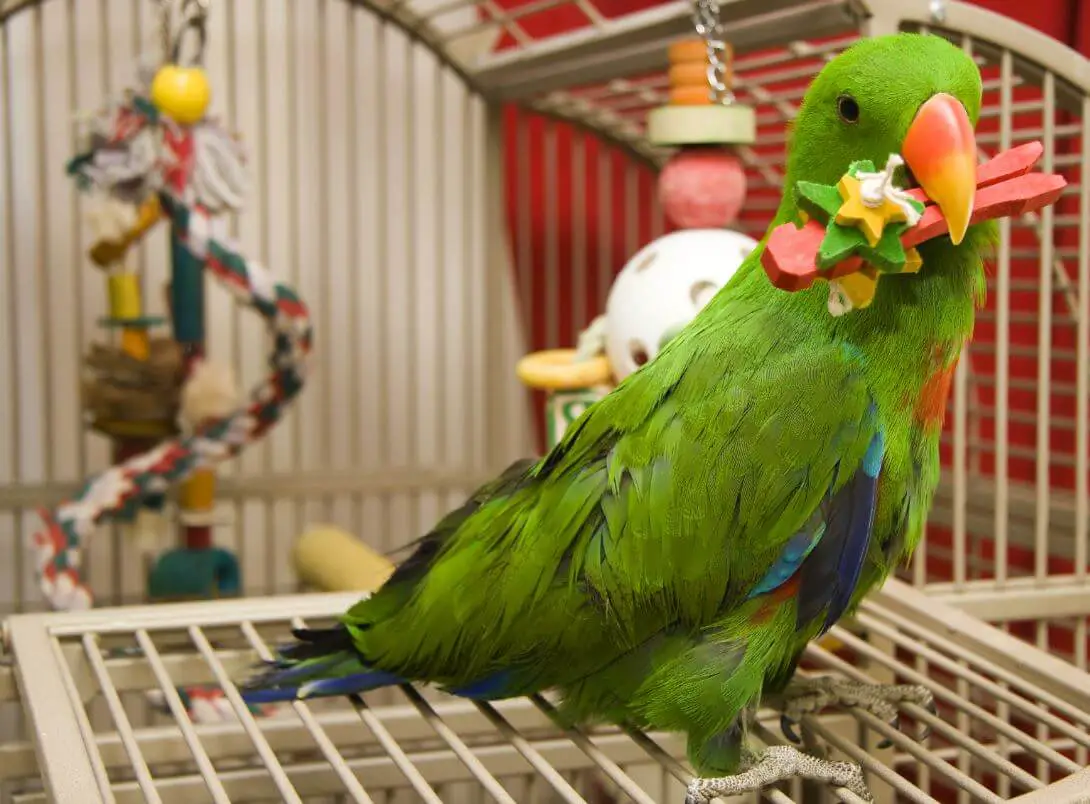
Eclectus parrots have been found to be very inquisitive and intelligent birds. They differ from other birds in their loud voices, which can sometimes annoy you, especially when communicating with a fellow bird. However, in captivity, the Eclectus Parrot is usually a friendly animal once it has gained confidence in its owner.
In the wild, these birds are usually solitary, although they can also be found in pairs or in small groups where the males predominate (especially during reproduction). When the Eclectus Parrot gathers in groups, it usually does so in the treetops. But you can also see specimens flying over the trees at dawn or dusk when they are most active.
SOURCE: African Grey Parrot Pet
Eclectus parrot habitat
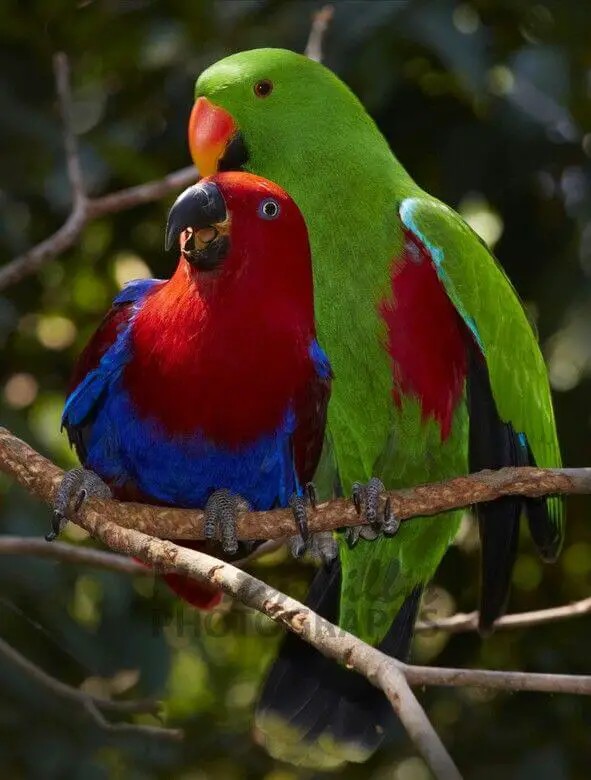
The Eclectus Parrot is fairly widespread in terms of habitat. The ecosystems where this bird is typically found are mangroves, savannas, and forests in New Guinea, the Solomon Islands, northeastern Australia, and the Moluccas.
This species usually lives between coconut plantations and eucalyptus forests at an altitude of no more than 1,900 meters. Consequently, the Eclectus Parrot can be said to be common in coastal areas, in the lowland forests, and in some areas used for the above-mentioned crops.
Physical features
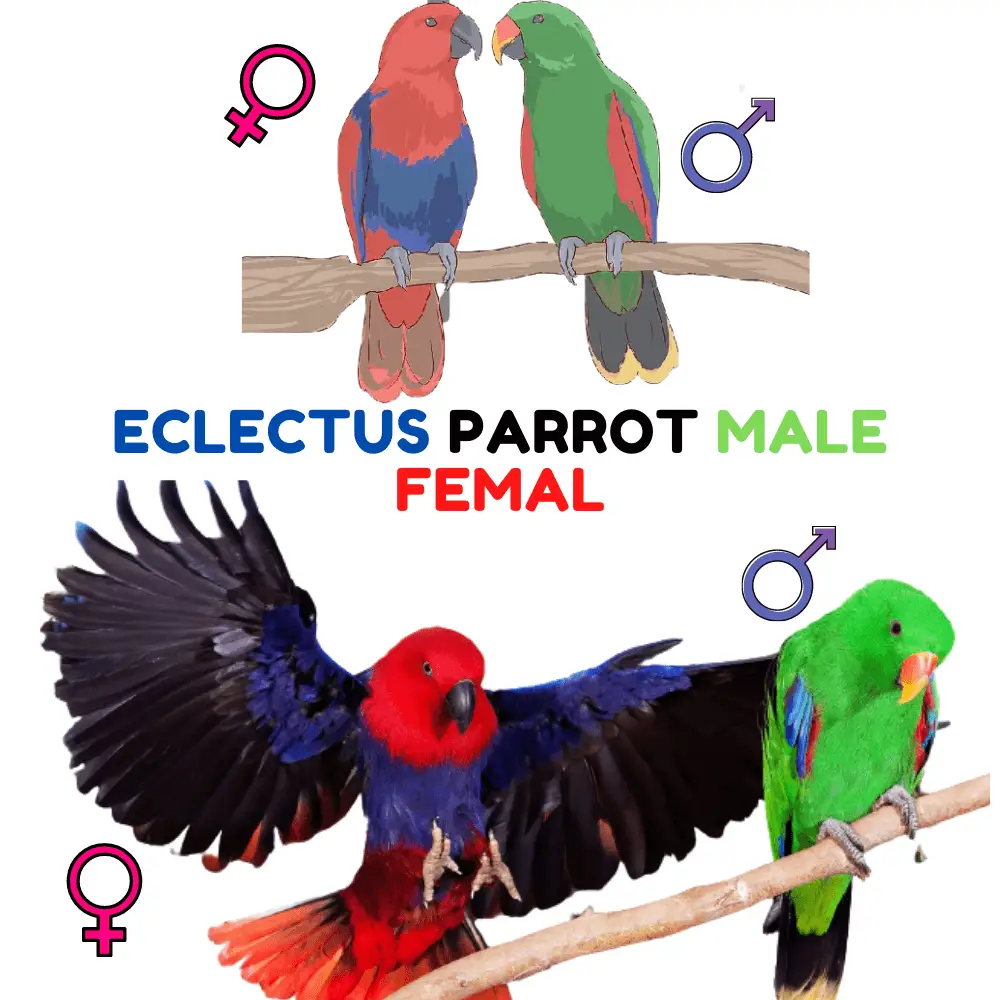
The Eclectus Parrot is between 35 and 42 centimeters tall and weighs 355 to 615 grams. Due to the pronounced sexual dimorphism, males can be easily distinguished from females. Males’ plumage has colors like coral and green feathers, although they also have some red and blue on their wings. They also have an orange beak.
In contrast, the females have a black beak and red plumage, which is usually darker on the back. Blue and violet also predominate in females, especially on the chest and throat. The tail is orange-yellow above and dark red below, fading to yellow-pink at the end.

